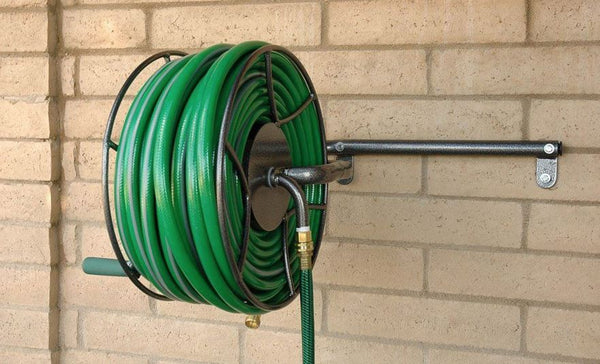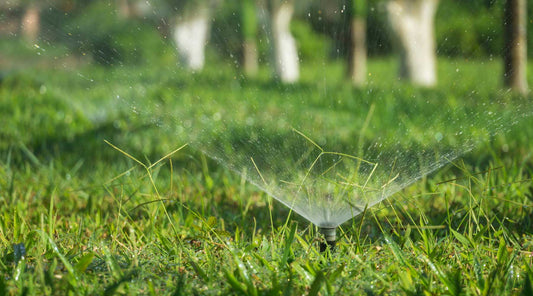Living in cold climates can be tough on some of your gardening tools, and more specifically your garden hose. Most garden hoses do not do well when out in harsh environments – be it during winter weather or the heat of the summer.
Because of this, gardening experts follow strict protocols when it comes to preparing their irrigation system. Similarly, various manufacturers have also conceptualized products that are built to withstand the cold, making it easier for homeowners to maintain their tools properly without too many added steps.
Before we delve into the recommended products, let’s first talk about traditional hoses and how they hold up during the winter season.
Can You Leave A Traditional Garden Hose Out During Winter?
It is not recommended to leave your hose out during winter, even if you have one made with great qualities. Because water runs through the pipes that the hose is connected in, and runs through the hose itself, there is a huge chance that the water can freeze over even when the hose is not in use. Water expands when frozen, this adding pressure into the interior of the hose. If the temperatures are low enough, the hose will then start to crack, leak, deteriorate, or even burst.
At What Temperatures Can A Water Hose Start To Freeze?
Since garden hoses are not built with interior heat or insulation, they can freeze in as little as 6 hours if temperatures start to drop down at 32 degrees Fahrenheit or 0 degrees Celsius.
Besides, you will most likely not be needing your hose for watering your garden during the winter time, so it is best kept in a warm, safe place.
Detailed Guide On How To Store Your Garden Hose For Winter

Towards the end of fall or the early part of winter is the best time to start storing your garden hose. Even if your location does not get too intense during winters, it would still be wise to secure your gardening tools and stay on the safe side. This not only ensures a lengthier lifespan for your tools, but it also gives you one less thing to think about when maintaining your home in winter.
Below are the steps to take in order to properly store your garden hose and prepare your outdoor pipes before it gets too cold:
Step 1: Shut off the water supply to the outdoor faucet
More often than not, outdoor faucets have a separate shutoff valve so that when you need to cut the supply there, it won’t affect any of your faucets indoors. Once the supply is cut off, turn on the faucets outside so that any of the excess water stored inside the pipes are extracted.
If your outdoor faucet does not have a dedicated shut off valve, then you may have to shut off your main valve while accomplishing this task.
Step 2: Disconnect your garden hose from the outside faucet
Leaving the garden hose connected to the spigot only increases the risk of any excess water running through the connection. Because of this it is best to disconnect them completely.
While you’re at it, remove any extra equipment you have such as an automatic timer, sprayer nozzle, secondary hoses, and allow all of these to dry off before keeping it in storage.
Step 3: Drain out the garden hose
Drape your hoses over a fence or a chair to drain it of any remaining water as well.
Step 4: Carefully coil up your garden hoses
Once they are properly drained and dried off, coil your garden hoses into large coils amounting to about 2 feet to 3 feet in diameter. This space is to ensure that you minimize the risk of kinks and protect the material while it is kept away.
Make sure not to coil them up too tight as this can cause wear and tear. For a faster and smoother coiling and storage experience, we recommend investing in a garden hose reel to make the job easier.
Step 5: Secure then in a dry location
If you do not have a garden hose reel, you can secure your hose with a tie wrap that can keep two ends of the hoses together. This will prevent the loops from separating out before you meant them to.
Once secured, place them in a garage, garden shed, basement, or other dry storage areas of your house to effectively shield them from the extreme cold.
What Makes A Hose Good For Winter Use?

There are certain qualities that a hose should possess to better determine if it will still hold up well in cold temperatures. This includes the following:
Temperature Control
Some hoses are actually designed to offer advanced temperature control. A heated hose is specifically made with freezing temperatures in mind, and they are usually very effective.
Ability To Expand
There are hoses made to expand. These are not necessarily great for everyday use as they tend to tear easily compared to the traditional material used in hoses. However, for winter, they can be very helpful since it can handle any internal pressure that freezing water may be giving off.
Tolerance For Pressure
In relation to the above quality, other hoses that may not expand but are built to withstand harsh pressure may be more tolerant during the winter season.
5 Best Garden Hoses For Cold Weather
Now that you have a better idea of what to look for, let’s dive right into the top 5 garden hoses we feel carry these qualities best and what we recommend for your and your home for the winter season.
Flexzilla HFZC550BRS SwivelGrip Garden Hose

One of the main factors that make the Flexzilla model unique is its special swivel grip that allows for effortless uncoiling and connecting to other devices. There is little to no risk of this hose tangling or kinking up in the process.
It is abrasion-resistant, which is an added factor in how long its lifespan can be. It is also adorned with aluminum fittings that are highly durable and resistant to crushing. Moreover, it is free of lead and is lightweight, making it the perfect garden hose if you need one for drinking water.
Apex, 8695-25, Commercial All Rubber Hot and Cold Water Hose

This hose may be designed for commercial use, but who’s to say you can’t have it in your home as well? It is made of the proprietary NTS reflex mesh technology, which helps prevent it from kinking or tangling.
It also has a rubber tubing that helps withstand the cold, and a SealFatTM brass connector to prevent leaks from here on out. The only downside is that it can be prone to corrosion when not properly maintained.
Gilmour 874501-1001 Flexogen Super Duty Garden Hose

Gilmour has been a strong name in the watering equipment industry for decades now, and for good reason. They use high quality materials that don’t disappoint. This hose has 8 layers to it, making it virtually kink-resistant. Its brass connections are also resistant to crushing and corrosion, making it a very durable garden hose. Moreover, it comes with a lifetime warranty from the manufacturer so you can rest assured knowing your garden hose can be well maintained for a long time.
Briggs and Stratton 8BS50 50-Foot Premium Heavy-Duty Rubber Garden Hose

This hose is made up of rubber and then coated with a polymer to add to its durability and flexibility. It is secured with rubber washers to minimize risk of leaks, and feature heavy-duty couplings that are nickel-plated, so you shouldn’t expect them to corrode or get crushed easily. Lastly, this hose can withstand temperatures of up to -25 degrees Fahrenheit!
IEKA Expandable Garden Hose

Last but not the least, we present to you our top pick for expandable hoses. It is highly stretchable, and automatically expands as the water fills it up inside. It can stretch up to 3 times its original size and also retracts automatically once you drain out all the water. Truly, a hassle free garden hose!
You’re All Set!
With a detailed guide on how to choose your winter hose, and some of our best picks, you can be sure that your next purchase is safe throughout all seasons. If you decide to stick to your traditional hose, simply follow the steps above to lengthen its lifespan no matter how cold it gets.
If you are looking for a garden hose reel or cart to effortlessly coil, expand, and secure your traditional hose, check out our offerings below:
Yard Butler Garden Hose Reel Carts
You may also shop our variety of hangers if you want a simple design to keep your hose in storage.





